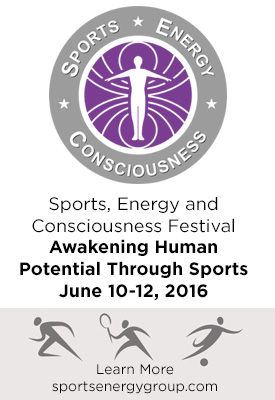Sports, fitness and exercise programs in the United States continue to evolve as athletes of all types, both professional and recreational, seek to achieve higher levels of performance. In doing so, athletes, coaches, trainers, and sports psychiatrists are embracing some of the concepts of the Integral Movement in the West, in order to attain elevated states of athletic functioning and heightened awareness. These somatic mind/body practices integrate Eastern and Western principles, philosophies and exercises to achieve optimal results. Michael Murphy, who along with George Leonard has introduced the first coherent integral practice in the West, Integral Transformative Practice (ITP), has termed these approaches “Transformative Practices” and defines them in Future of the Body as “a complex and coherent set of activities that produce positive change in a person or a group.”
One of the key fundamental understandings of transformative practice is the emphasis on an internal orientation as the means towards realizing one’s potential. Besides the typical external approach of learning from others and looking outside oneself to obtain a solution, it is this move towards the “inner game”, the practice of interiority, that is now gaining significant momentum as a means of elevating an athlete’s game in all areas. Once a sportsperson begins to embrace the path of inner transformation, the internal changes will translate into their athletic endeavors and become a game-changer, and serve to transform every dimension of their life.
The integral movement takes the approach that the whole is greater than the sum of the parts, and our ability to attain our greatest potential is best achieved through the simultaneous embrace of body, mind, heart and soul. In the West, sports has embodied this concept through the development of cross-training, in which the emphasis is placed on a multitude of training techniques, which taken in their totality, allows for a fuller development of the athlete. The ancient Greek term for this is antakolouthia, the mutual entailment of the virtues, by which development in one area enhances development in all other areas.
Recent studies have demonstrated that aerobic exercise increases cognitive development (Hillman 2008). Another study has shown strength training to be a significant aid in emotional improvement and well-being (Hadhazy 2010). The implications of an integrated approach to self-realization are being unpacked and bridged into every area of life. Sports represent a potent vehicle for pioneering, cutting-edge, cross-training disciplines that offers the actualization of the evolution of our species. This continues to grow as cross-training techniques become more sophisticated and the athletic experience is elevated into the supernormal.
Many of these techniques embrace somatic, mind/body approaches and embrace intelligence as being body-based. Besides the cranial brain, research into the “belly brain,” or “hara,” provides some remarkable insights into how the body receives and processes information.
Although research on the functioning of our center is relatively new, remarkable findings have already been discovered. In a series of studies at the Institute of Noetic Sciences, Dean Radin and Marilyn Schlitz found statistically significant evidence demonstrating that subjects experienced stimuli first in the belly brain before consciously receiving the signals in the cerebral brain, demonstrating that the common concept of “gut instinct” is more than simply an old superstition. The adaptation of this understanding to sports is an evolutionary breakthrough, in that players can develop the ability to have a hunch as to what is going to happen before it actually occurs. Precognition, intuition, sixth-sense and premonition have a physical location in the body, the core.
An athlete’s ability to develop this sweet spot through transformative practices heightens their ability to achieve exceptional performance on the playing field and in their life. Core centering has taken on a significant role in practice and training techniques, as well as emotional stability and resilience. We learn to “think” a different way, as our center provides a wisdom that is not found in the cranial brain. As we learn to feel more deeply into our senses through our center, a heightened level of understanding emerges. Sensitivity is being recognized as a new type of intelligence, and one’s practice of interiority is a good place to go.
Barry Robbins is a founding member of the Sports, Energy, and Consciousness Group. If you have ever wondered what the future of athletic performance and coaching will look like, join them at the first ever Sports, Energy, and Consciousness Festival (including a presentation from our Director of Education, Katia Petersen). This weekend celebration combines cognitive, somatic, psychological, energetic and consciousness training into everyday take-home practices that will harness the power of your true athletic ability. This experiential offering is for recreational athletes, individuals who wish to realize their latent abilities, competitive players, and coaches and trainers interested in taking their teaching to the next level.
